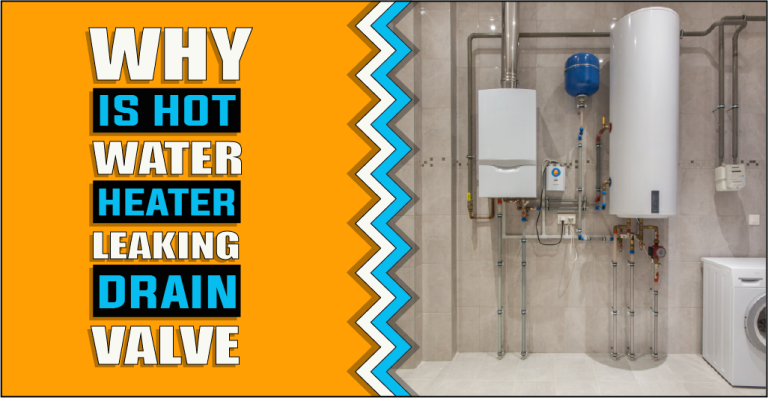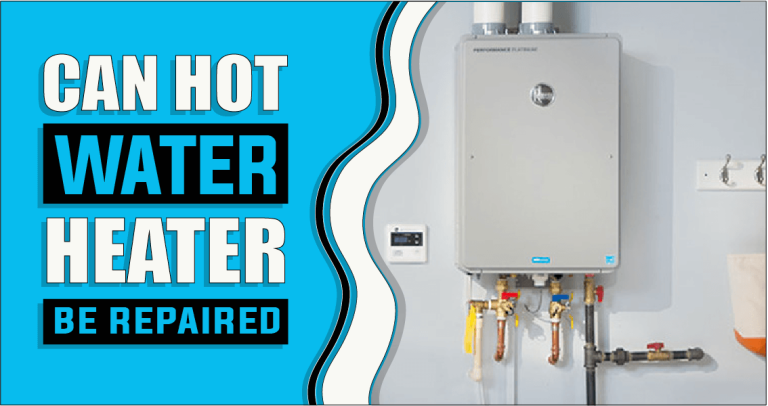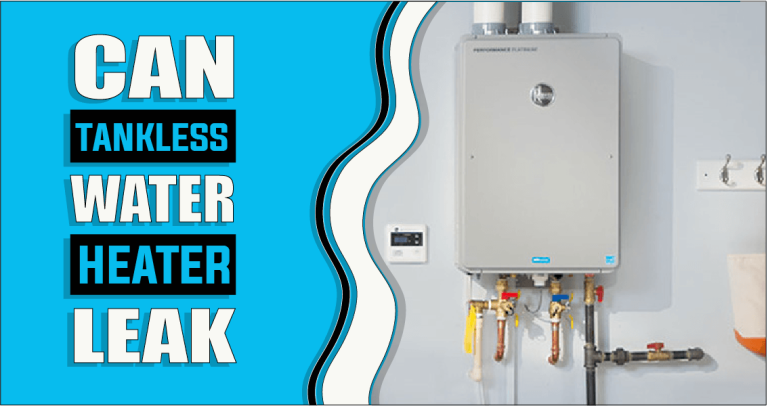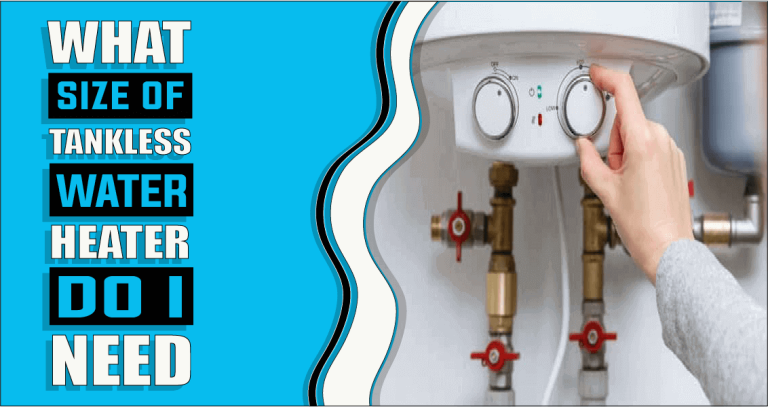Do I Need a Water Heater Expansion Tank | Essential or Optional for Your Water Heater?
Are you unsure about do I need a water heater expansion tank? If so, you’re not alone. Many homeowners find themselves pondering this question when it comes to their plumbing system. A water heater expansion tank is an incredible device designed to regulate the pressure in a closed plumbing system. It safeguards against excessive pressure build-up, leading to leaks, bursts, and water heater and plumbing system damage. Understanding whether you need an expansion tank depends on factors such as the type of plumbing system you have, local building codes and regulations, and personal preferences. Today, we will explore these factors in detail and provide 14 key points to consider when evaluating the need for a water heater expansion tank. By the end of this article, you’ll have a clearer understanding of the purpose of an expansion tank, its benefits, and whether it is recommended for your specific plumbing setup.
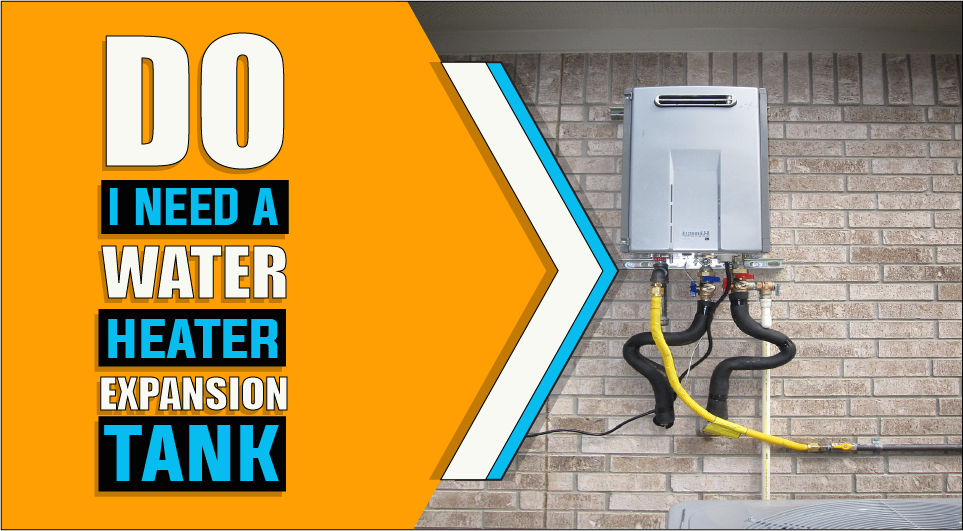
Signs You May Need an Expansion Tank for Your Water Heater
Water heater expansion tanks play a crucial role in maintaining the safety and efficiency of residential plumbing systems. They are designed to alleviate the pressure that can build up within the system as the water heats and expands.
Without an expansion tank, this pressure can cause various issues, including leaks, damage to plumbing components, and even water heater malfunction. To determine if you need an expansion tank, you must be aware of signs suggesting its necessity. Let’s get started!
1: Temperature and Pressure Relief Valve (T&P Valve) Discharge –
Perhaps the most obvious sign that you require an expansion tank is water discharging from the T&P valve on your water heater. This valve is a safety feature designed to release excess pressure. Suppose it regularly discharges water, especially when the water heater is heating. In that case, it indicates that your system is experiencing excessive pressure, and an expansion tank is needed to address this issue.
2: Intermittent or Fluctuating Hot Water –
In a system without an expansion tank, as hot water is used and the water heater reheats the water, you may notice intermittent fluctuations in hot water temperature. This occurs because the pressure changes during the heating process, which can disrupt the delivery of consistent hot water to your faucets and fixtures. An expansion tank helps maintain steady pressure and temperature.
3: Hammering or Banging Noises in Pipes –
Water hammer is a phenomenon where abrupt changes in water pressure cause pipes to make loud, banging noises. When water heats and expands without an expansion tank to absorb the pressure, it can lead to a water hammer. This creates annoying sounds and can lead to pipe damage over time.
4: Frequent Leaks or Drips –
Unexplained leaks or drips in the plumbing system, especially around the water heater or related pipes, can indicate that your system is under excess pressure. Over time, these leaks can damage your property and lead to costly repairs. An expansion tank can prevent such issues by maintaining consistent pressure levels.
5: Reduced Water Heater Lifespan –
Without an expansion tank, your water heater may experience more frequent heating and cooling cycles, which can shorten its lifespan. Over time, this could lead to the need for premature replacement, incurring additional costs. Installing an expansion tank can help extend the life of your water heater by reducing the strain on its components.
6: Inconsistent Water Pressure –
Another telltale sign of needing an expansion tank is inconsistent water pressure throughout your plumbing system. When pressure varies due to the expansion of heated water, it can result in weak water flow at some fixtures and excessive pressure at others. This inconsistency can affect the overall performance and convenience of your plumbing system.
Factors Influencing the Need for an Expansion Tank
Various factors influence whether you need a water heater expansion tank, as it’s not a one-size-fits-all solution. Understanding these factors is crucial to making an informed choice about installing one in your plumbing system. Below, we will discuss these factors in detail.
1: Temperature Fluctuations –
Temperature changes are one of the primary reasons for the need for an expansion tank. As water or other fluids heat, they expand and contract as they cool down. This expansion and contraction can lead to excessive pressure build-up or damage the pipes and components in closed systems like hydronic heating or domestic hot water systems. An expansion tank allows the system to accommodate these temperature-related volume changes without causing problems.
2: System Volume –
The system’s overall volume plays a significant role in determining the need for an expansion tank. Smaller systems may not experience considerable pressure variations, as the expansion and contraction of water are less pronounced. Larger systems, on the other hand, can generate substantial pressure changes that an expansion tank helps to manage effectively.
3: Operating Pressure –
The operating pressure within the system is another crucial factor. When water expands due to temperature increases, the pressure can rise significantly. If the system’s pressure rating is exceeded, it can result in leaks or damage. Expansion tanks act as pressure relief valves, absorbing the excess pressure and maintaining it within safe limits.
4: Water Heater Systems –
In domestic hot water systems, expansion tanks are almost essential. When water is heated within a water heater, it expands, and without an expansion tank, this could cause the relief valve to open, potentially wasting water and energy. Additionally, it can lead to more frequent maintenance and repairs of the water heater.
5: Closed vs. Open Systems –
The need for an expansion tank also depends on whether the system is open or closed. Closed systems, like hydronic heating systems, are sealed from the atmosphere. In these systems, an expansion tank is critical for handling pressure changes. Open systems, such as well pumps or irrigation systems, may not need an expansion tank since they are open to atmospheric pressure changes.
6: Water Supply Pressure –
In some cases, high water supply pressures can necessitate the installation of an expansion tank. If the municipal water pressure is exceptionally high, it can lead to excessive pressure in the plumbing system when the water heats up, potentially causing damage.
7: System Design –
The system’s design and layout can also impact the need for an expansion tank. Systems with many elbows, T-fittings, or other components that restrict flow may experience more significant pressure fluctuations when the fluid expands or contracts.
8: Local Regulations –
Local building codes and regulations may mandate the use of expansion tanks in specific types of systems. Always check with local authorities to ensure compliance.
The Main Purpose Of An Expansion Tank
The purpose of an expansion tank is to manage the thermal expansion within a water heater. When water is heated, it expands in volume, and without a means to accommodate this expansion, it can lead to increased pressure within the plumbing system.
An expansion tank provides a designated space for the excess water to go, relieving pressure and ensuring the safety and longevity of the water heater and the entire plumbing system.
By absorbing the expanded water, the expansion tank helps prevent potential leaks, bursts, and damage to pipes, fixtures, and the water heater. It acts as a buffer, regulating pressure fluctuations and preventing pressure spikes that can cause serious problems.
In addition to protecting the plumbing system, an expansion tank offers other benefits. It helps maintain consistent water pressure, reduces stress on valves and fittings, and improves the overall efficiency of the water heater. Allowing the water heater to operate at optimal conditions can lead to energy savings and prolong the lifespan of the equipment.
Overall, the purpose of an expansion tank is to provide a crucial safety mechanism that manages the thermal expansion of water, ensuring the smooth and reliable operation of the water heater while protecting the integrity of the plumbing system.
Types of expansion tanks you can select
Expansion tanks are essential components in plumbing systems that help manage thermal expansion and prevent pressure build-up. Different types of expansion tanks are available, each designed to suit specific system requirements. Here are a few common types:
1: Diaphragm Expansion Tanks –
These tanks have a flexible diaphragm that divides the tank into two compartments – one for water and the other for compressed air. As water expands, it compresses the air, allowing room for expansion while maintaining pressure balance.
2: Bladder Expansion Tanks –
Like diaphragm tanks, bladder expansion tanks use a rubber bladder to separate the water and air chambers. The bladder is pre-charged with air, which adjusts according to water expansion, ensuring consistent pressure.
3: Compression Expansion Tanks –
These tanks do not have a separating diaphragm or bladder. Instead, they rely on the compressibility of water itself. As water expands, it compresses within the tank, managing excess pressure.
4: Thermal Expansion Tanks –
Specifically designed for water heaters, thermal expansion tanks absorb expanded water and relieve pressure. They feature a sealed container, allowing water to grow into the tank without causing pressure spikes.
5: Vertical and Horizontal Tanks –
Expansion tanks come in vertical and horizontal orientations to accommodate different installation requirements. Vertical tanks are commonly used in residential applications, while horizontal tanks are suitable for limited space or commercial settings.
An appropriate expansion tank selection depends on system size, water volume, and pressure requirements. Consulting with a professional plumber can help determine the most suitable type and size of expansion tank for a specific plumbing system.
Cost Considerations
1: Purchase and Installation Costs –
The cost of purchasing an expansion tank varies depending on the brand, size, and type. On average, expansion tanks can range from $40 to $200 or more.
Professional installation may also be necessary, adding to the overall cost. Plumbing labour rates vary by location, but installation typically ranges from $100 to $300.
2: Comparison with Potential Savings and Benefits –
Consider the potential cost savings and benefits of installing an expansion tank. These can include:
- It extended the lifespan of water heater and plumbing components by reducing stress on them.
- It reduced the risk of water heater damage and leaks, which could lead to costly repairs or replacements.
- Improved efficiency of the water heater, potentially lowering energy bills.
- It’s Avoidance of potential repair costs related to plumbing system damage caused by excessive pressure.
3: Factors Affecting Overall Cost –
Several factors can influence the overall cost:
- The type and size of the expansion tank you choose.
- The complexity of the installation, including the need for additional fittings or modifications to your plumbing system.
- Labour costs in your area can vary significantly.
- Whether you install yourself (DIY) or hire a professional plumber.
4: Long-Term Investment –
While the upfront cost of an expansion tank may seem like an expense, it should be viewed as an investment in the longevity and efficiency of your water heating system and plumbing. Consider the long-term benefits and potential savings when evaluating the cost.
5: Return on Investment (ROI) –
Calculate the potential ROI by estimating the cost savings and benefits over the expected lifespan of the expansion tank. This can help you determine whether the investment is financially justified in your specific situation.
Conclusion
In conclusion, the question of ‘Do I need a water heater expansion tank?’ ultimately boils down to ensuring your plumbing system’s safety, efficiency, and longevity. Understanding the dynamics of temperature-induced expansion and the limitations of closed systems is key.
Installing an expansion tank, when needed, can also prevent costly repairs, extend the life of your water heater, and maintain consistent water pressure and temperature throughout your home. It’s an investment in the overall well-being of your plumbing system and, by extension, your peace of mind.
To make an informed decision, consult professionals who can assess your requirements. Doing so will ensure that your water heater functions smoothly and you can enjoy the comfort of your home without unexpected plumbing issues.
Relevant Questions:
A water heater expansion tank is a small, additional tank typically installed on a water heater’s cold water supply line. It provides extra space for expanded water volume due to thermal expansion. When water heats up, it expands, and without an expansion tank, this increased pressure can damage the plumbing system. The expansion tank acts as a safety buffer, absorbing the excess pressure and preventing potential issues.
You can test your water pressure using a pressure gauge, which can be purchased at a hardware store. It is considered high if the pressure reading exceeds 80 psi (pounds per square inch). To determine if you have a closed plumbing system, consult a professional plumber who can assess the setup and provide accurate information.
While some homeowners may choose to install an expansion tank themselves, it is generally recommended to seek professional assistance. A licensed plumber has the knowledge, expertise, and tools to ensure a proper installation that adheres to local codes and regulations. DIY installations may result in incorrect placement or improper connections, rendering the expansion tank ineffective.
In some cases, an alternative solution, such as a pressure-reducing valve (PRV) or a pressure relief valve (PRV), may be suitable. These devices regulate and control water pressure, reducing the likelihood of thermal expansion. However, it is essential to consult a plumber to determine the best solution for your specific plumbing system and needs.
Ella John is passionate about helping her readers make the best choice when purchasing a heater. She understands that selecting a heater can be difficult and strives to provide information to help make the decision easier. Ella’s website, Heatersinfo.com, provides valuable insight into heating trends and types of heaters and tips on how to care for them. She also advises selecting the right heater based on individual needs and preferences. Her expertise in electronics makes her an excellent source of knowledge, and she is confident that anyone who visits her website will find the perfect heater information for their needs. Ella’s dedication to helping others make educated decisions about buying the right heater is unparalleled, and she hopes to continue offering her expertise for many years. With Ella’s help, finding the perfect heater can be a breeze!

